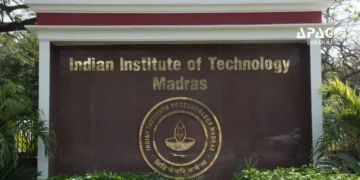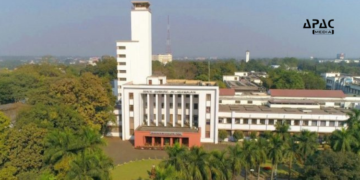As the Indian Meteorological Department (IMD) celebrates its 150th Foundation Day today, Prime Minister Narendra Modi launched Mission Mausam to mark the occasion, calling it an initiative to make India ‘weather-ready and climate-smart’. The mission, approved by the Union Cabinet last year, is the government’s endeavor to improve disaster preparedness.
‘Mission Mausam’, which has been launched today, is an endeavour to make India a climate smart nation. At the same time, this Mission will contribute to a sustainable future. pic.twitter.com/GeeqqaYvX5
— Narendra Modi (@narendramodi) January 14, 2025
IMD, established in 1875, is the apex agency of the government for all matters related to meteorology and allied subjects. Headquartered in New Delhi, it has five other regional meteorological centers spanning across India at Mumbai, Chennai, Calcutta, Nagpur, and Guwahati. It is under the aegis of the Ministry of Earth Sciences (MoES). Currently, IMD’s responsibilities include undertaking meteorological observations and providing critical information for weather-sensitive activities such as agriculture, shipping, aviation, etc., to warn against severe weather phenomena, to provide important meteorological statistics, and to foster research in meteorology.
The launch of Mission Mausam is expected to enhance the efficiency of IMD in minimising the impact of natural disasters and provide other important meteorological insights.
Here’s an overview of the mission explaining its features and significance.
What is Mission Mausam?
Mission Mausam is a Rs 2,000 crore project aimed at upgrading India’s weather monitoring and forecasting infrastructure. It is expected to double the country’s Doppler radar network from 39 to 78 by 2026, strengthen weather modelling, and enhance forecasting accuracy. It also focuses on weather modification techniques, such as managing rainfall, fog, and lightning, and establishing a first-of-its-kind convective cloud chamber in Pune for studying Indian monsoon clouds. The new Doppler radars will be installed in Pune, Nashik, Ratnagiri, Kolhapur, and Chhatrapati Sambhaji Nagar in Maharashtra. The cloud chamber facility will be located at IITM, Pune.
What is the objective of the mission?
The mission aims to enhance weather forecasting accuracy, particularly for extreme events like heat waves and heavy rainfall. Current IMD accuracy for heatwave predictions is 97.99%, while heavy rainfall forecasts stand at 80%, leaving room for improvement. The initiative also targets better disaster management and is anticipated to benefit sectors such as agriculture, aviation, and health with more accurate weather predictions.
Who will lead the mission?
Mission Mausam will be led by three key institutions under the Ministry of Earth Sciences: the India Meteorological Department (IMD), the Indian Institute of Tropical Meteorology (IITM) in Pune, and the National Centre for Medium-Range Weather Forecasting (NCMRWF) in Noida.
Why is the mission important?
Mission Mausam represents a transformative step in India’s pursuit of becoming a climate-smart nation, underlining the critical importance of advanced meteorological infrastructure in a rapidly changing climate scenario. The doubling of the Doppler radar network signifies the government’s commitment to enhancing real-time weather tracking and disaster preparedness. By improving the accuracy of forecasting extreme weather events like heatwaves and heavy rainfall, the mission addresses a crucial gap in India’s disaster management capabilities, which directly impacts important sectors and public safety. The establishment of the convective cloud chamber at IITM, Pune, is a pioneering effort, putting India at the forefront of monsoon cloud research, with potential global implications for understanding tropical weather systems.
Furthermore, the mission’s emphasis on weather modification and technological upgrades positions India to mitigate the effects of climate change and safeguard vulnerable populations. By leveraging the expertise of leading institutions under the Ministry of Earth Sciences, the mission ensures a multidisciplinary approach to weather forecasting, reinforcing IMD’s role as a pivotal agency in national resilience efforts.




































































Discussion about this post